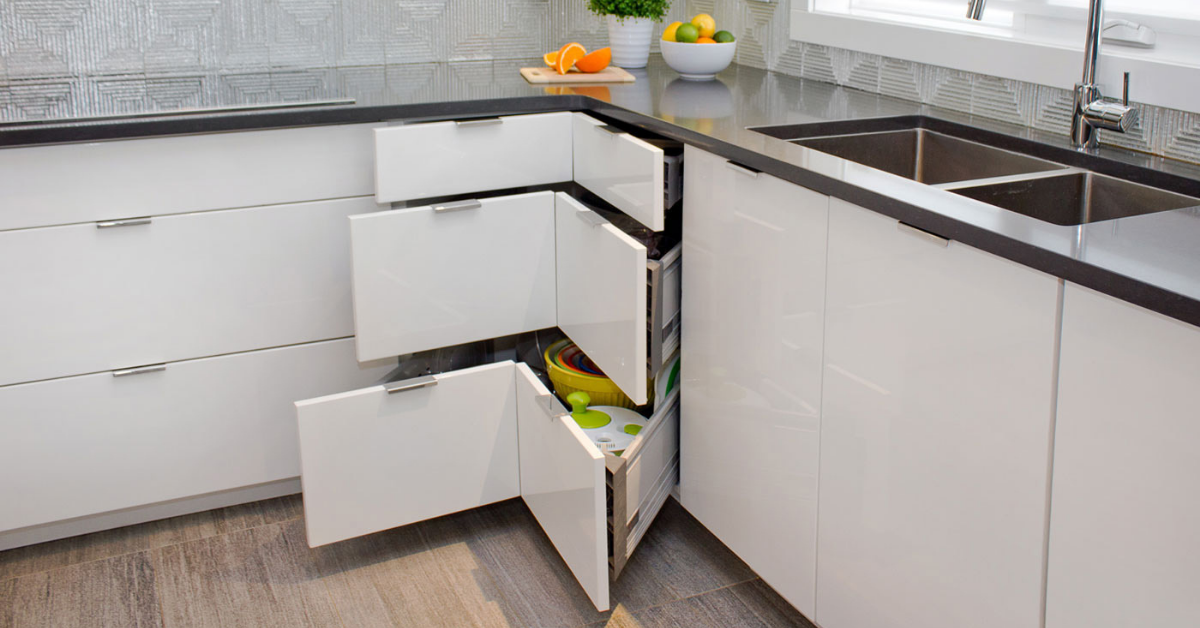Corner cabinets are a must-have in most kitchens, except for galley kitchens. They provide valuable storage space, but with so many options available, choosing the right one can be overwhelming. This guide will explore the different types of corner cabinets and their pros and cons to help you make an informed decision.
Base Corner Cabinet (BCC):
- A traditional option with two doors hinged together.
- Larger BCCs offer better accessibility.
- Standard sizes are 33″, 36″, and 39″.
- Usually comes with one adjustable shelf, with options for more.
- Popular add-on: Lazy Susan for easier access to stored items.
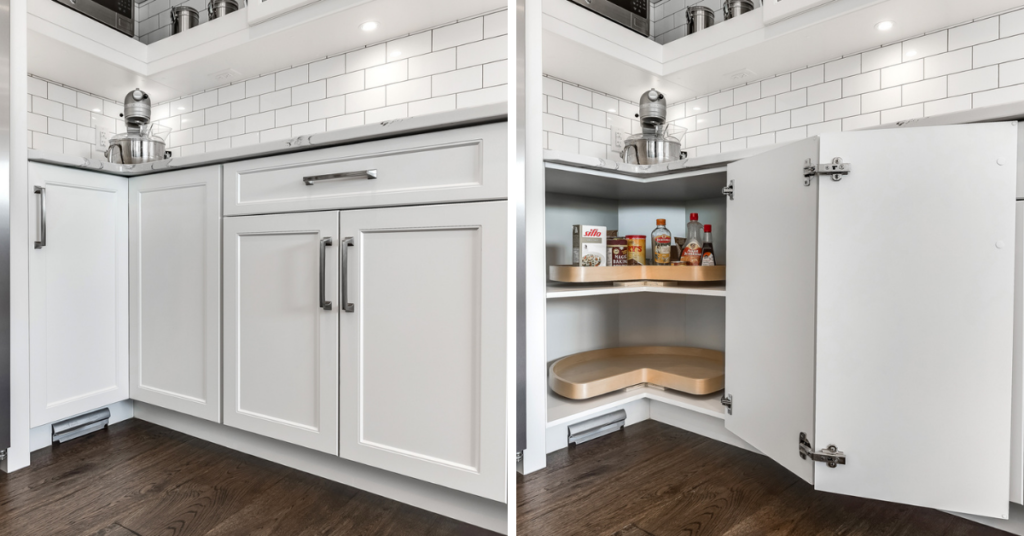
Base Blind Corner (BBC):
- Gaining popularity due to its clean, streamlined look.
- Has one full-height door or a combination of a door and a drawer.
- Standard sizes are 39″, 42″, 45″, and 48″.
- Requires installation away from the wall for better access.
- Often paired with pull-out shelves for improved functionality.
- Popular pull-out options: LeMans II Twin Corner Storage Unit and Magic Corner Storage Unit.
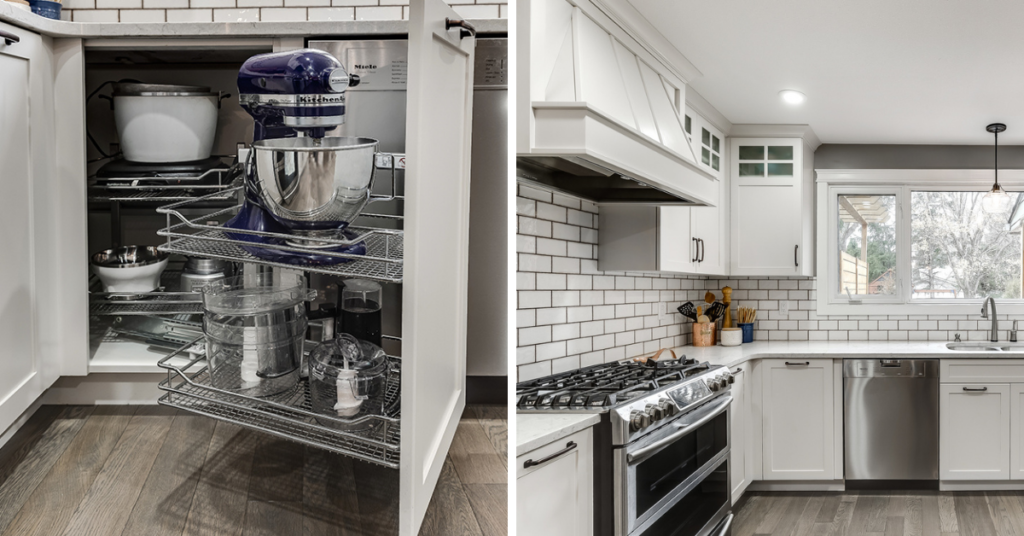
Corner Drawers:
- Innovative and ergonomic, offering exceptional storage capacity.
- Typically come in a 3-drawer configuration, available in 36″ and 42″ sizes.
- Ideal for aging-in-place kitchens due to their ease of access.
- Most expensive option due to complex construction.

Base Angle Corner (BAC):
- Less popular option compared to others.
- Available in one-door or door-and-drawer configurations.
- Standard sizes are 33″ and 36″.
- Limited pull-out accessory options.
- Angled design can increase countertop costs.
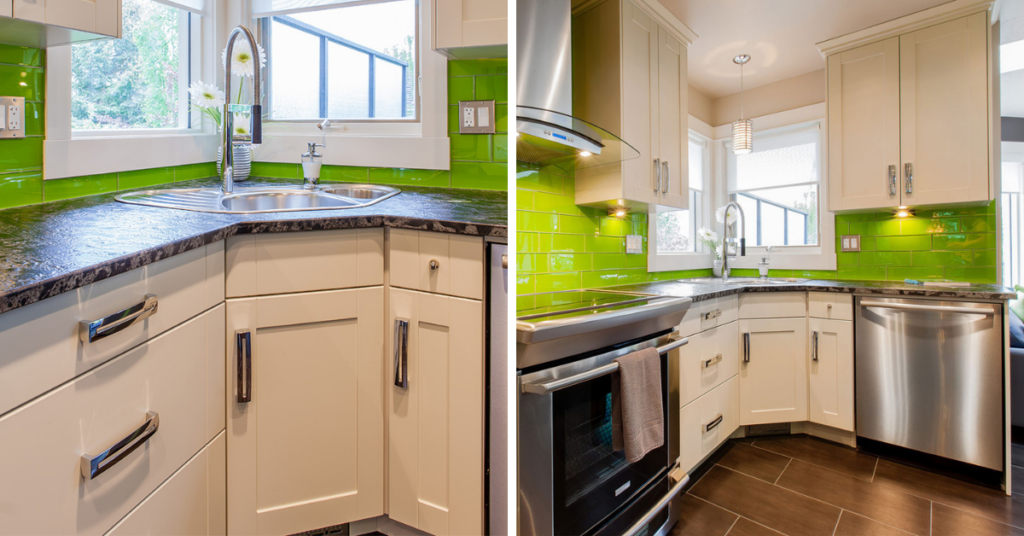
Void Corner:
- Not technically a cabinet, but rather an unused corner space.
- Ideal for situations where a larger drawer bank or sink needs to be placed in the corner.
- May be a good option for smaller kitchens.
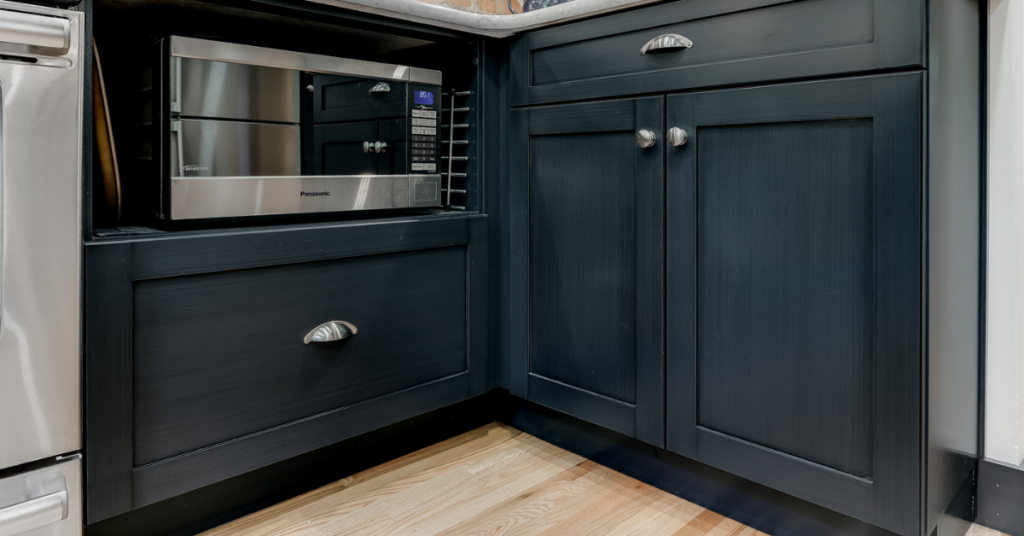
Choosing the Right Corner Cabinet:
- Consider your storage needs and accessibility requirements.
- Think about future needs as your kitchen should last for many years.
- Consult with a professional kitchen designer for personalized advice.
Additional Tips:
- Look for features like soft-close doors for a touch of luxury.
- Choose cabinet materials that complement your overall kitchen design.
- Don’t forget about under-cabinet lighting for better visibility.
By understanding the different types of corner cabinets and their functionalities, you can create a well-organized and efficient kitchen that meets your needs for years to come.
Need more ideas for your kitchen remodel? Check out these top kitchen cabinet trends!

